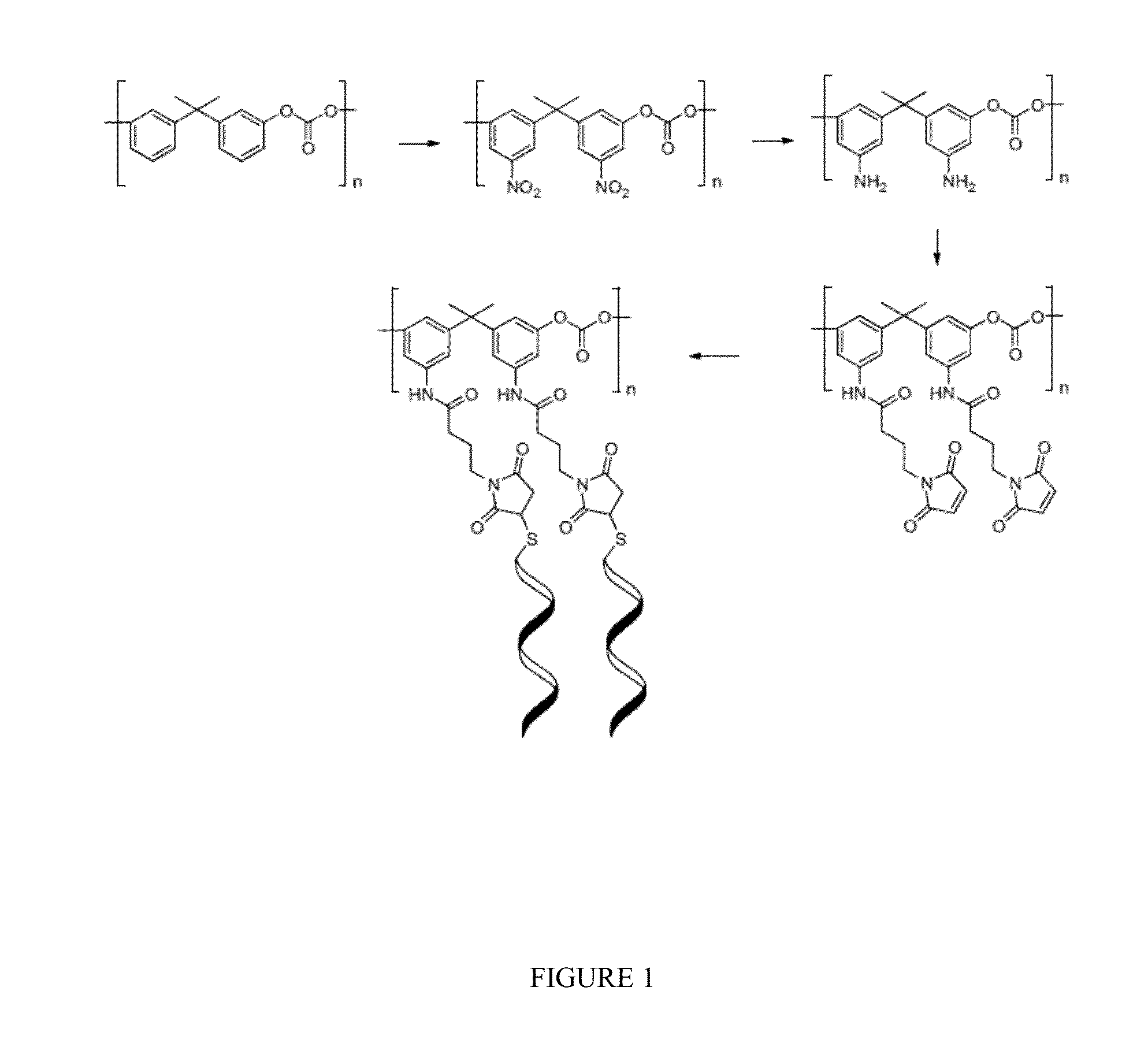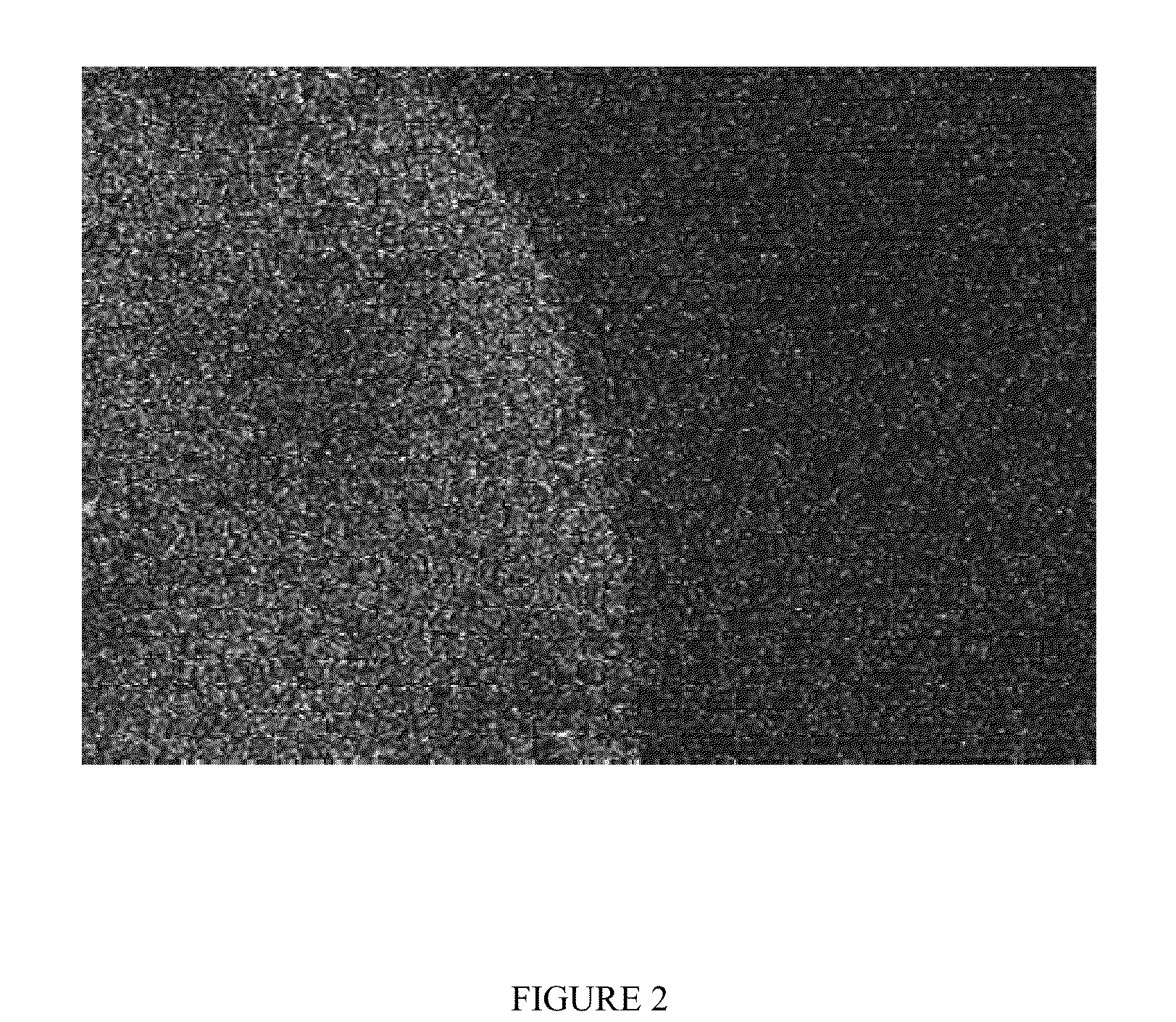Methods and Devices for Detection and Acquisition of Biomarkers
a biomarker and detection method technology, applied in the field of biomarker detection and acquisition methods and devices, can solve the problems of not directly sampling clinically relevant biomarkers from the site, unable to achieve rapid and highly sensitive detection of changes in a biomarker, and unable to directly sample clinically relevant biomarkers, etc., to achieve the effect of avoiding misdiagnosis risks, avoiding misdiagnosis risks, and avoiding misdiagnosis risks
- Summary
- Abstract
- Description
- Claims
- Application Information
AI Technical Summary
Benefits of technology
Problems solved by technology
Method used
Image
Examples
example 1
Detecting ssDNA in Solution with Polycarbonate Immobilized Probes
[0162]This Example describes polycarbonate functionalized by a DNA probe and its utilizations for specific capture of ssDNA from solution.
[0163]Attachment of DNA probes to polycarbonate: The surface of polycarbonate was first nitrated and reduced to introduce amino groups which were used further to attach commercially available thiol / amino bifunctional linker (FIG. 1). DNA with 3′ thiol modification was subsequently coupled to the linker tethered to the polycarbonate.
[0164]Visualization of 5′-Cy5 modified DNA attached to polycarbonate: To visualize the DNA on the surface of the polycarbonate, DNA modified with one Cy5 at the 5′ and thiol at the 3′ was attached using chemistry described above. Single layer 5′Cy5-DNA was imaged with confocal microscopy (FIG. 2) showing successful functionalization of the surface. In vitro capture of ssDNA on polycarbonate modified with specific DNA probe: In order to test the ability of ...
example 2
Conjugation of DNA Probes to Stainless Steel Surfaces
[0171]This Example describes attachment of DNA oligomer probes containing a 3′ thiol modification to stainless steel surfaces coated in gold. Attachment of DNA probe to gold-coated stainless steel: Gold surfaces was readily modified by attaching thiol-derivatized single-stranded DNA. The sulfur atom of the thiolated DNA forms a covalent bond with gold. Visualization of DNA to gold-coated stainless steel: To visualize the DNA on the gold-coated surface of the stainless steel sample, a fill-in PCR reaction was performed to synthesize the complementary strand of the single-stranded DNA using fluorescently labeled dUTP. The resulting double-stranded oligomers contained multiple copies of Chromatide® Alexa Fluor® 488-5-dUTP, which fluoresces in the green channel, similar to fluorescein. Fluorescence microscopy demonstrates successful functionalization of the gold-coated stainless steel surface (FIG. 3).
[0172]Materials and methods used ...
example 3
Enhanced Binding of Oligonucleotides to the Surface of Metal Microneedle Arrays
[0178]To further facilitate the attachment of DNA oligomer probes containing a 3′ thiol modification to stainless steel surfaces coated in gold, a NaCl titration was introduced. The protocol in EXAMPLE 2 described above was performed with the addition of increasing concentrations of NaCl. The amount of ssDNA coupled to the surface increased proportionally to the amount of NaCl added, and an approximately 10-fold increase was observed at the 1M NaCl concentration (FIG. 7). The quantitation of DNA bound to gold surface was determined using a Quanti-iT Green ssDNA Reagent Kit (Invitrogen).
PUM
 Login to View More
Login to View More Abstract
Description
Claims
Application Information
 Login to View More
Login to View More - R&D
- Intellectual Property
- Life Sciences
- Materials
- Tech Scout
- Unparalleled Data Quality
- Higher Quality Content
- 60% Fewer Hallucinations
Browse by: Latest US Patents, China's latest patents, Technical Efficacy Thesaurus, Application Domain, Technology Topic, Popular Technical Reports.
© 2025 PatSnap. All rights reserved.Legal|Privacy policy|Modern Slavery Act Transparency Statement|Sitemap|About US| Contact US: help@patsnap.com



